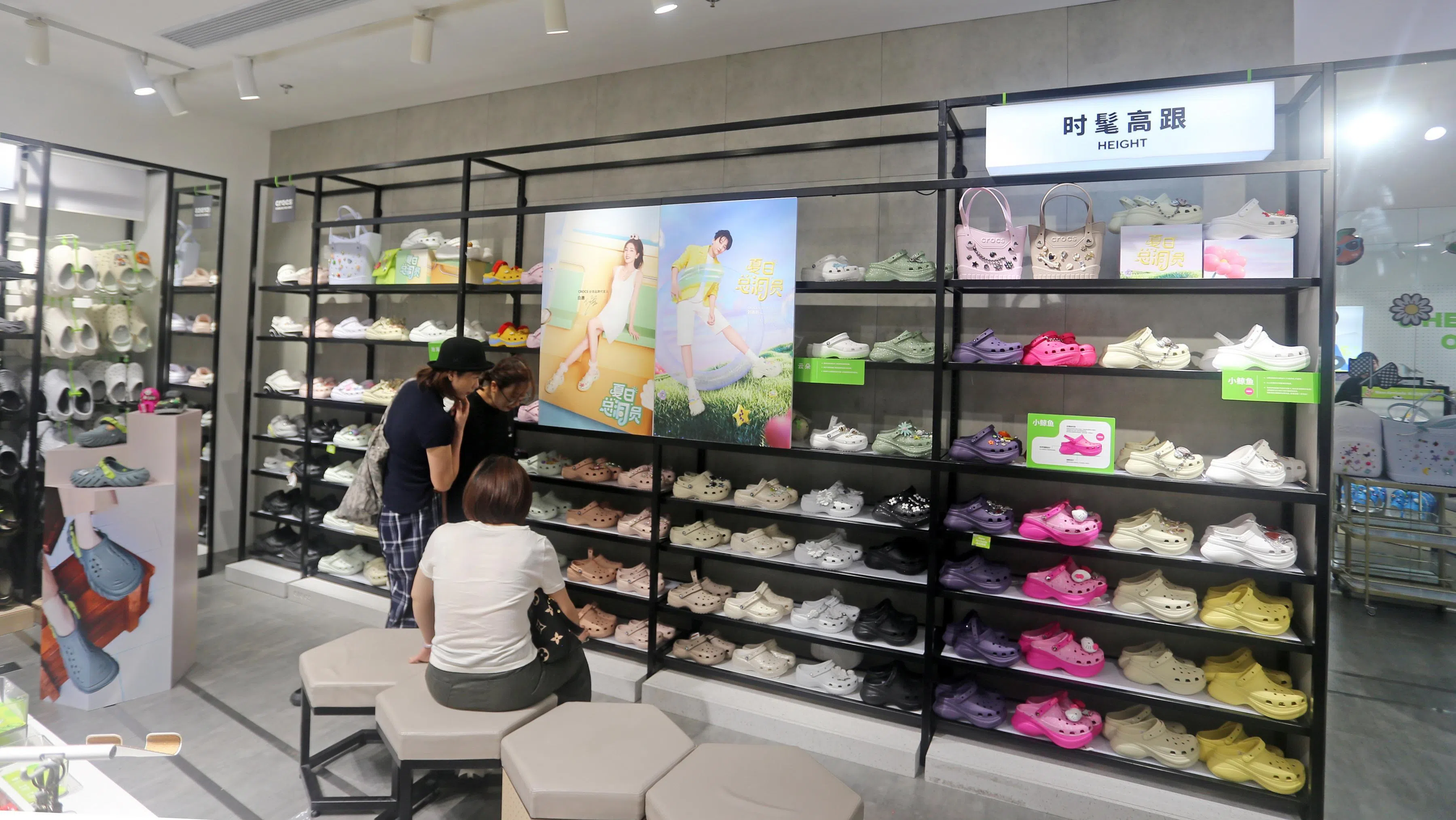How Crocs became the right fit for China’s Gen Z
Sign up now: Get ST's newsletters delivered to your inbox

In the most recent quarter, Crocs’ China sales were up more than 30 per cent, while North American revenues were down by 6.5 per cent.
PHOTO: REUTERS
Juliana Liu
Follow topic:
Crocs, the perforated clogs commercialised by a trio of middle-aged American boating enthusiasts, have become the surprising shoe of choice for Chinese hipsters. Their comeback can provide valuable insights for Western firms struggling to connect with young consumers in a US$7 trillion (S$9 trillion) market where confidence has been dented.
China’s uneven economy – exports have remained robust, but spending is feeble after a property market collapse – has created the conditions for some companies to profit from “emotional consumption”.
The phenomenon is similar to the so-called lipstick index coined by American cosmetics mogul Leonard Lauder to describe people buying small treats to feel better during times of insecurity.
The concept has taken shape as a thriving industry embodied by the likes of home-grown Pop Mart, Laopu Gold and Luckin Coffee.
Crocs is one of the few American companies in that mix as an emotional consumption play. That is unusual in a country feuding nearly daily with Washington over tariffs and where consumers are increasingly seeking cultural authenticity in the things they buy.
In the most recent quarter, Crocs’ China sales were up more than 30 per cent, while North American revenues were down by 6.5 per cent.
People might not be spending on big-ticket items amid rising youth unemployment and a four-year economic downturn. However, they are craving instant dopamine kicks from opening blind boxes containing cute toys or trying creative drink flavours.
Crocs has positioned itself as a beneficiary of this trend.
The ability to customise the clogs with a wide variety of shiny charms from fried chicken to cartoon characters adds to the individuality factor, especially when the images are shared online. And from the advertisements to the spokesmodels, the brand has become so localised that people are not sure about its origins.
“Why are Crocs so expensive?” and “Where is it from?” are two of the top associated search terms.
Chinese consumers love anything dorky, cheesy or fun, said director Allison Malmsten at marketing research firm Daxue Consulting.
Once advertised as an “ugly” shoe, that perception is now key to its popularity. Embracing unconventional footwear allows users to thumb their noses at the establishment and declare their independence.

Once advertised as an “ugly” shoe, that perception is now key to Crocs’ popularity.
PHOTO: REUTERS
For decades, Western firms had profited from the seemingly unstoppable growth of China’s consumers. But with the economy slowing and the emergence of domestic rivals, some of those companies fell behind.
Crocs has been able to buck that trend after overcoming years of challenges. It entered the country through a distributor in 2006. After some initial success, there was a long fallow period compounded by troubles in the US.
But a turnaround began taking shape about five years ago, coinciding with the move to hire Chinese actress Yang Mi as ambassador.
China remains the world’s second-biggest retail market, and the key is to localise operations as much as possible. Crocs has been able to put the right foot forward, proving that not all Western retailers in the country have lost their touch. BLOOMBERG

